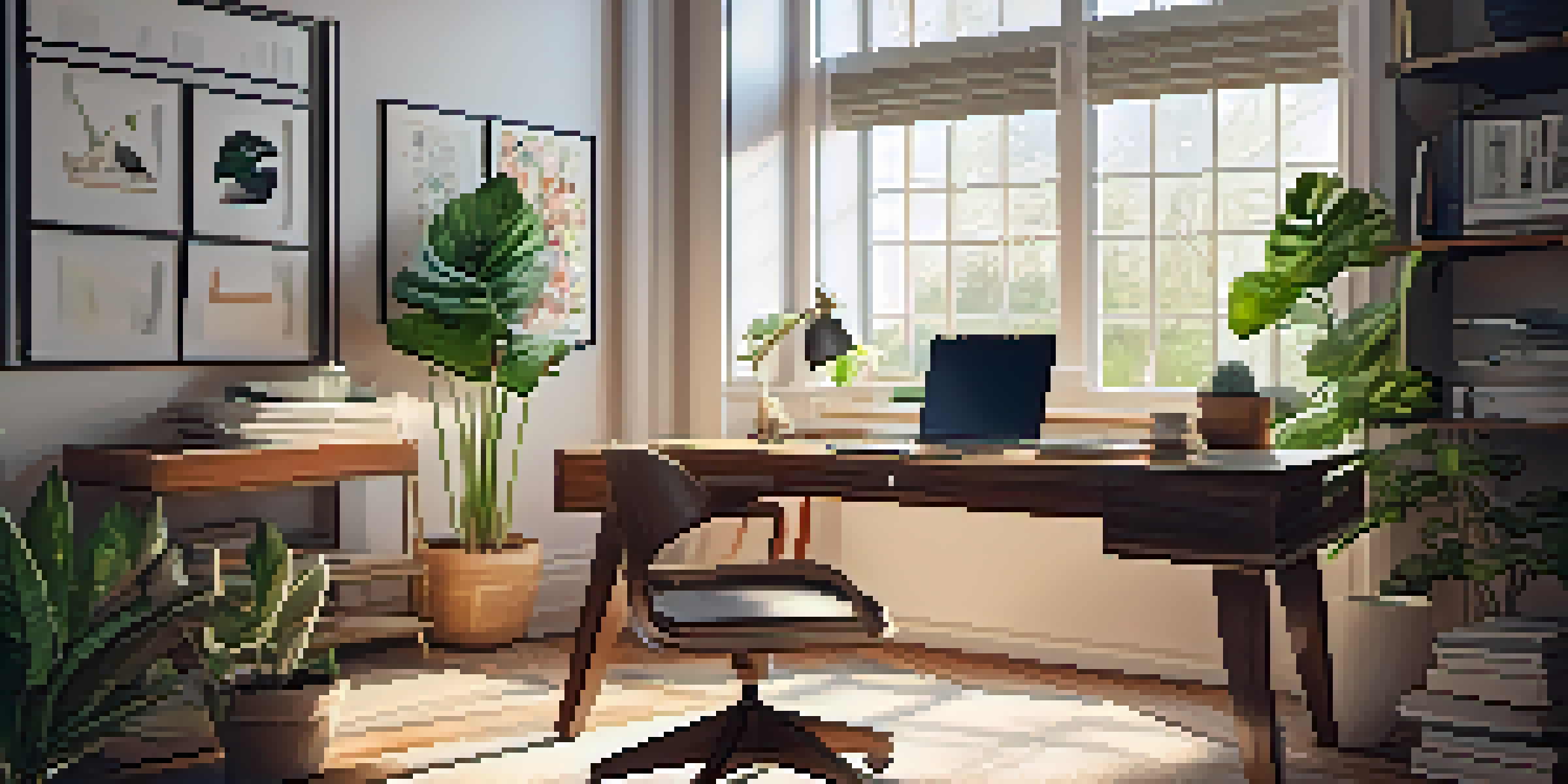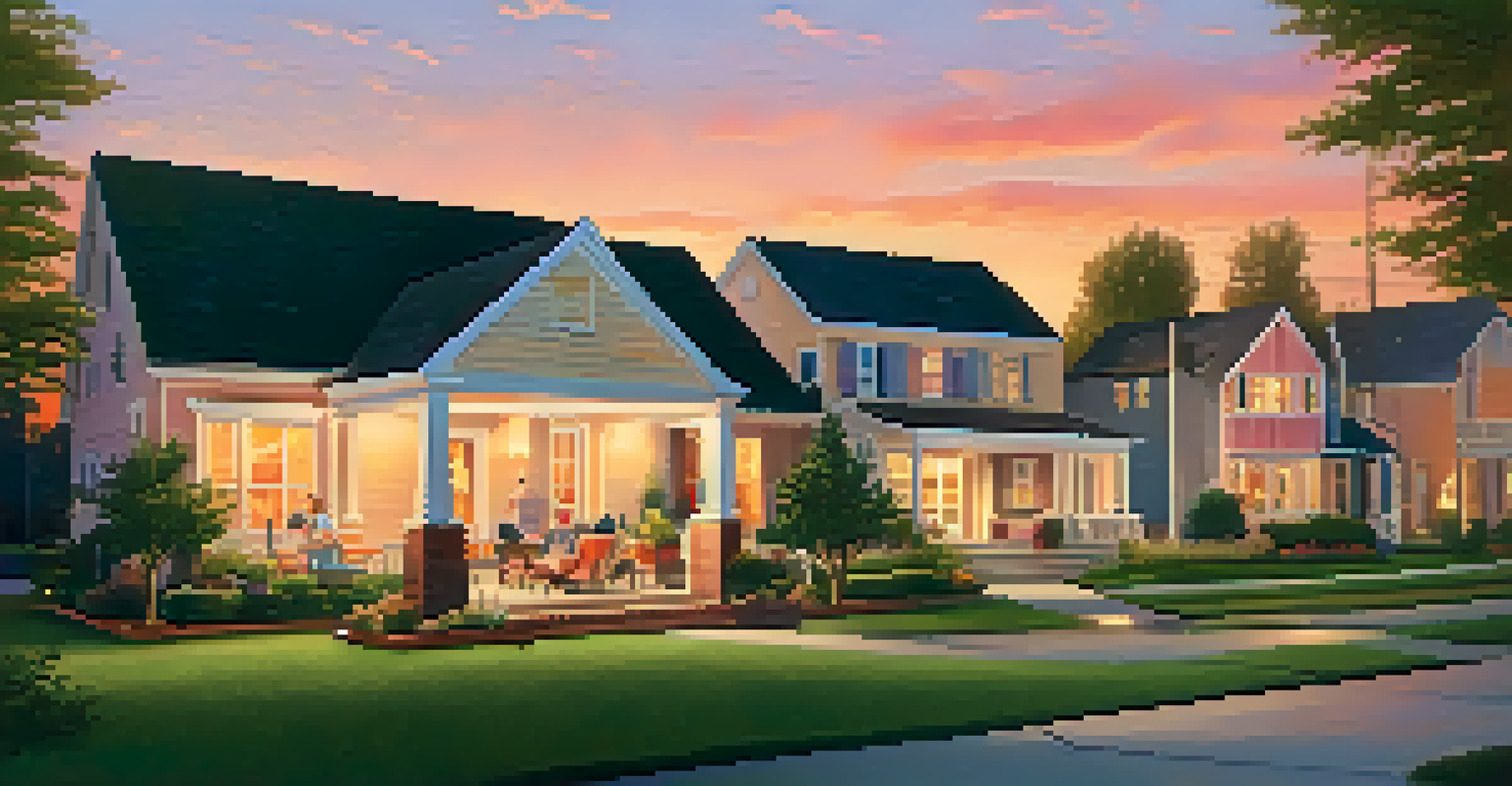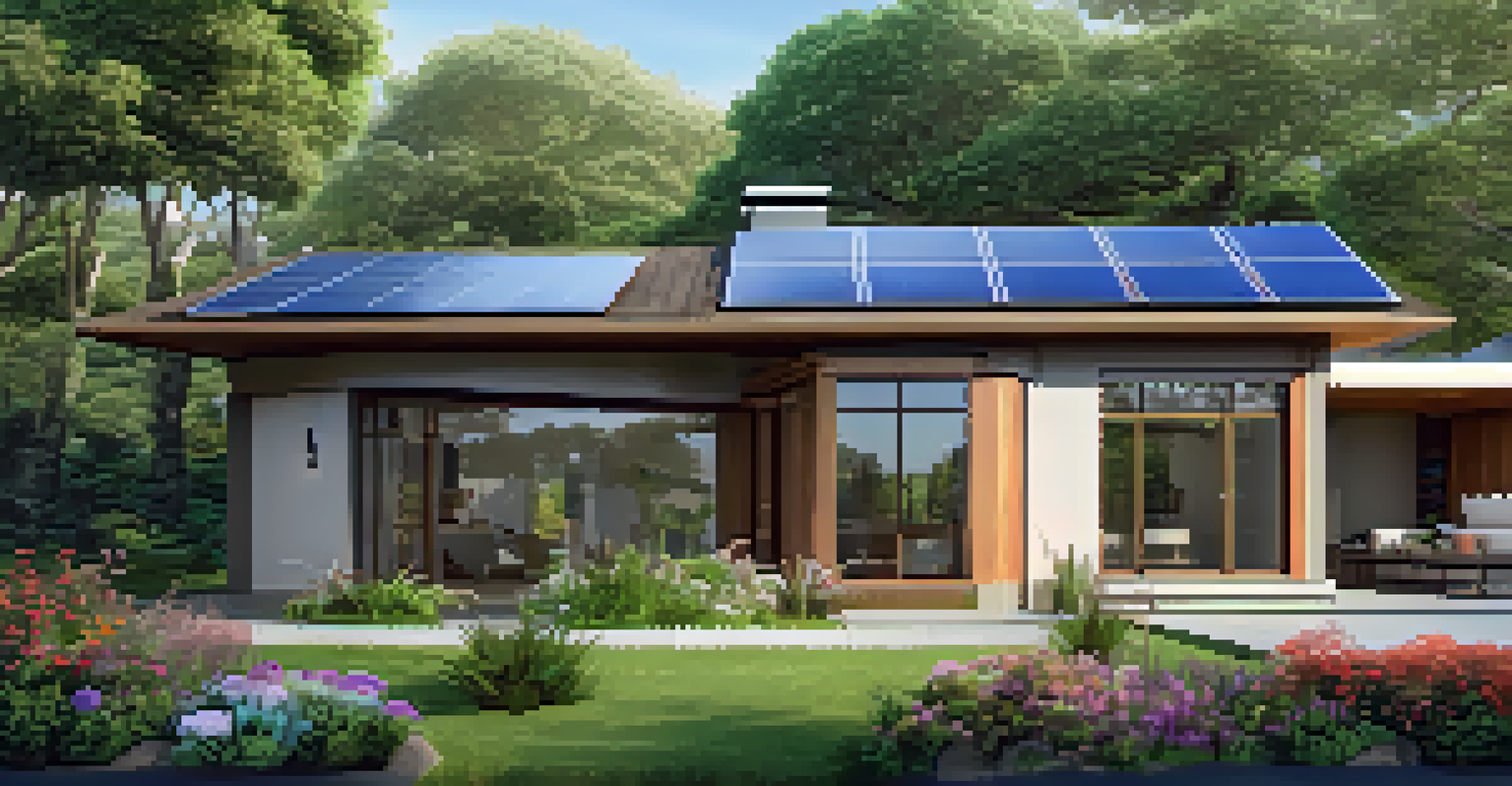The Changing Demand for Housing Types in the Remote Work Era

The Rise of Remote Work and Its Impact on Housing
The shift to remote work has transformed how we view our living spaces. No longer tied to a specific office location, many people are re-evaluating what they need in a home. This newfound flexibility has led to increased demand for homes that accommodate both work and leisure under one roof.
The future of work is not about where you work; it’s about how you work.
As more companies adopt flexible work policies, employees are seeking homes that offer designated office spaces. Features like soundproof rooms, high-speed internet access, and comfortable workstations are now considered essential. The traditional notion of a home is evolving from a place to simply live to a multifunctional space that meets both personal and professional needs.
Moreover, the desire for a better work-life balance is prompting many to move away from bustling urban centers. Suburban and rural areas are experiencing a surge in popularity as people seek larger homes with more outdoor space. This trend reflects a broader societal shift towards valuing lifestyle over proximity to the workplace.
Changing Preferences: Size and Amenities of Homes
With the rise of remote work, home size preferences are changing significantly. Many individuals and families are now seeking larger homes that can comfortably accommodate remote work setups. This includes dedicated office spaces, additional bedrooms, or versatile areas that can serve multiple purposes.

Additionally, amenities that enhance the remote work experience are becoming increasingly desirable. High-speed internet, energy-efficient appliances, and outdoor spaces for relaxation or exercise are topping the list of must-haves for homebuyers. These features are not just luxuries; they have become essential for maintaining productivity and well-being while working from home.
Remote Work Shapes Housing Needs
The rise of remote work is driving demand for homes with dedicated office spaces and features that support work-life balance.
This shift in preference has also led to a reevaluation of what constitutes a desirable neighborhood. Proximity to parks, recreational facilities, and even coworking spaces are now being factored into housing decisions. Homebuyers are looking for communities that support their lifestyle, blending work and leisure seamlessly.
Urban vs. Suburban: A New Housing Landscape
The pandemic has sparked a noticeable migration from urban areas to suburbs and rural locations. Many people are leaving the hustle and bustle of city life in search of more space and a quieter environment. This trend has led to a booming real estate market in areas previously overlooked.
Home is not just a place to live, but a place to thrive.
Suburban homes often offer larger square footage and outdoor amenities at a more affordable price than urban properties. This shift is reshaping the housing landscape, as new developments spring up to accommodate the influx of homebuyers seeking a different lifestyle. Developers are responding by creating communities that integrate work and leisure.
However, it’s not just about moving away from the city; it’s about finding the right balance. Many remote workers still value access to urban amenities, such as cultural events and dining options. As such, the ideal location may now be a suburb that offers a quick commute to the city or one that has developed its own vibrant local scene.
The Demand for Multi-Generational Housing
With remote work blurring the lines between personal and professional life, multi-generational living is gaining traction. Families are increasingly opting for homes that can accommodate multiple generations under one roof, allowing for shared resources and support. This trend is reshaping the way we think about space and community.
Multi-generational homes often feature separate living areas, ensuring privacy while promoting family bonding. This setup allows parents, children, and even grandparents to live together without sacrificing their individual lifestyles. As a result, the demand for properties with flexible layouts is on the rise.
Suburban Shift and Lifestyle Changes
Many are moving from urban areas to suburbs in search of larger homes and outdoor spaces that enhance their quality of life.
Moreover, this shift reflects a broader societal trend towards valuing family connections and support systems. As people navigate the challenges of remote work and caregiving, having loved ones nearby can provide much-needed assistance and companionship. This demand for multi-generational housing highlights the importance of adaptability in today’s housing market.
The Role of Technology in Housing Demand
Technology is playing a crucial role in shaping housing demand in the remote work era. Smart home features, such as automated lighting, security systems, and energy-efficient appliances, are becoming increasingly attractive to buyers. These advancements not only enhance convenience but also promote a sustainable lifestyle.
Additionally, technology is facilitating the home search process. Virtual tours and online listings have made it easier for potential buyers to explore properties without needing to visit in person. This shift has broadened the market, allowing buyers to consider homes in different regions that they may not have previously thought possible.
As remote work continues to evolve, the integration of technology into homes will likely remain a priority. Buyers will increasingly seek out properties equipped with the latest innovations that support their work-from-home lifestyle. The demand for tech-savvy homes is set to rise, reflecting a society that values connectivity and efficiency.
The Influence of Environmental Concerns on Housing Choices
As awareness of environmental issues grows, many homebuyers are prioritizing sustainability in their housing choices. Energy-efficient homes, eco-friendly materials, and sustainable building practices are becoming significant factors in purchasing decisions. This trend aligns with a broader commitment to reducing carbon footprints and living more sustainably.
Remote work offers the opportunity to choose locations that are not only comfortable but also environmentally conscious. Many buyers are now looking for homes that feature solar panels, rainwater harvesting systems, and energy-efficient appliances. These features not only reduce utility costs but also contribute to a healthier planet.
Sustainability Influences Home Choices
Homebuyers are increasingly prioritizing eco-friendly features and sustainable living in their housing decisions.
Furthermore, the desire for green spaces and proximity to nature is influencing housing demand. Buyers are increasingly seeking homes near parks, nature trails, and other natural amenities. This reflects a growing awareness of the importance of mental well-being and the role that nature plays in fostering a balanced lifestyle, especially in a remote work setting.
The Future of Housing Demand Post-Pandemic
As we move beyond the pandemic, the trends in housing demand are likely to continue evolving. The remote work era has fundamentally changed how we view our homes, and many of these changes appear to be here to stay. Homebuyers will increasingly prioritize flexibility, space, and functionality in their housing choices.
Real estate developers and agents will need to adapt to these shifting preferences by offering properties that meet the new demands of remote workers. This may involve creating homes with dedicated workspaces, outdoor areas, and energy-efficient designs that appeal to environmentally conscious buyers. The housing market will need to reflect the changing values of society.

Ultimately, the landscape of housing demand in the remote work era represents a significant shift in priorities. As we embrace this new way of living and working, our homes will become more than just places to reside; they will be integral to our overall lifestyle. The future of housing will be defined by adaptability, sustainability, and a deeper understanding of what it means to create a home.